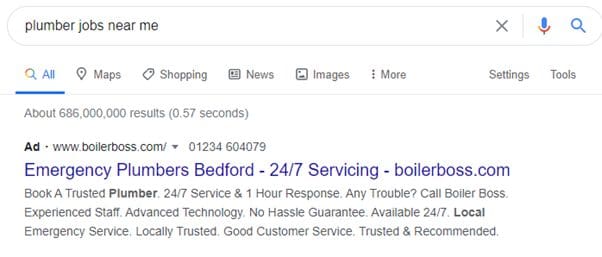Have you ever questioned the quality of traffic generated by your Google Ads?
After all, you’re paying for every click, so you need each one to be valuable to you.
Judging by some of the accounts we’ve audited, it’s a question many more businesses should ask themselves. There are companies pumping money into Google Ads without realising they’re wasting a substantial chunk of their cash on completely irrelevant and low-quality traffic.
So well done you for asking the question so many others don’t.
The good news is there’s an easy way to review what traffic Google Ads brings to your website. We’ll show you how to do it.
And if you find you are wasting money, the even better news is we’ll show you exactly what you can do to fix it.
So no more wasting your budget on crappy clicks – instead, you’ll spend it on high-quality traffic only, the kind that generates a positive ROI.
Sounds good, right?
Review your search terms
First, you need to review the search terms that have triggered your ads. This will show you exactly what people are typing into Google right before they click to your site.
Within Google Ads, click on “Keywords” on the light-grey sidebar on the left of your screen, and then “Search terms”.

As you sift through the search terms, you’ll likely learn two things:
- Your ads are being triggered by search terms that have nothing to do with your business … and the people making those searches are clicking on your ads anyway, which you’re paying for.
- People can’t spell.
Whilst you can’t do anything about the spelling, you can block you ads from showing for irrelevant searches. You’ll do this by adding precisely-targeted negative keywords to your Google Ads account.
Use negative keywords
These block your ads from showing for any searches that include the negative keyword.
Imagine you’re a plumber, and you advertise your services via Google Ads with the keyword [plumbers near me]. Due to how loose Google’s match-types now are, your ads could be triggered by a search for “plumber jobs near me”.
But the person who made that search doesn’t want to hire a plumber. They want to be employed as one. So if they click on your ad, that’s a waste of your money.
You don’t even need to imagine this scenario. Because I Googled “plumber jobs near me” and this was the first result:

As the absolute top of page result, this ad is going to get clicked on, because many people don’t read ads before clicking.
And poor Boiler Boss are going to pay for every single click.
To avoid this, they should add “jobs” as a negative keyword. “Career” and “hiring” as well, just to be safe. This way they’ll block their ads from showing for similar searches in the future.
Use negative keyword match types
Negative keywords can be added as either, broad match, “phrase match” or [exact match].
- Use broad match for any collection of words that will never be relevant, regardless of the order they appear in.
- Phrase match for any phrase (in a specific order) that will never be relevant, regardless of context.
- Exact match if you need to block any term that’s simply too broad.
(An example of an overly-broad search you might want to block: imagine you’re advertising a tripod for mobile phones; you might find your keyword [phone tripod] is triggered by searches for simply “tripod” … even though people searching for “tripod” probably want to buy a camera tripod. Entering [tripod] as a negative keyword will block these overly-broad searches.)
Apply your negative keywords at different levels
You can add negative keywords at the account level (via negative keyword lists), the campaign level, or the ad group level.
- Use negative keyword lists at the account level to block all phrases that will never be relevant to any campaign in your account.
- Campaign-level negative keywords to block phrases that might be right for some campaigns but not others.
- Ad-group level negative keywords to ensure search terms are triggering the correct ad groups.
Pause duff keywords
As you review your search terms, make sure you have the “keyword” column displayed. If you don’t have it added already, use the “Columns” button to add it now.

This will help you spot any keywords that consistently bring in rubbish traffic. If you identify any that bring in nothing but low-quality clicks, don’t be afraid to pause them. You can always replace them with a more precise keyword – either by using a narrower match type, or with a new longer-tailed keyword.
So, what’s next?
Depending on your budget, you might have thousands – perhaps even tens of thousands – of search terms within any single month.
And yes, it’s time-consuming and intensely dull to read through them one-by-one. But if you don’t, you’ll continue to waste money on low quality and irrelevant traffic.
Of course, if you’re looking for an alternative, why not hire a PPC specialist agency like Digital Gearbox? Not only will we manage your search terms for you, we’ll do a whole lot more to ensure your Google Ads activity is taken to the next level.
Interested? Book a free Google Ads audit.
P.S. Reviewing your search terms and adding negative keywords is one of the tips Becky and Michael gave in a recent episode of PPC Burrito, the Digital Gearbox podcast that explores everything PPC.








